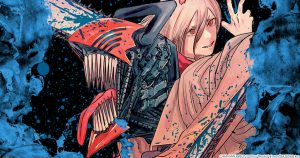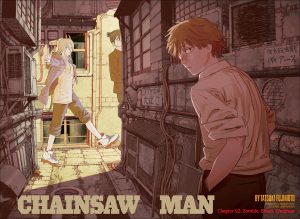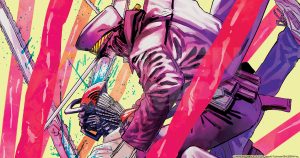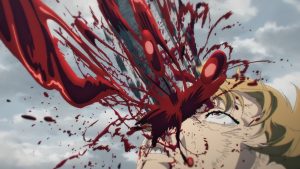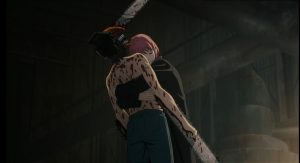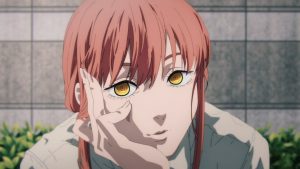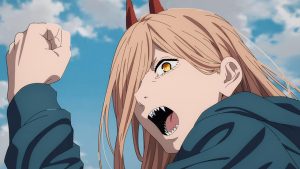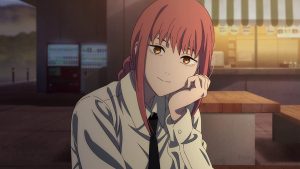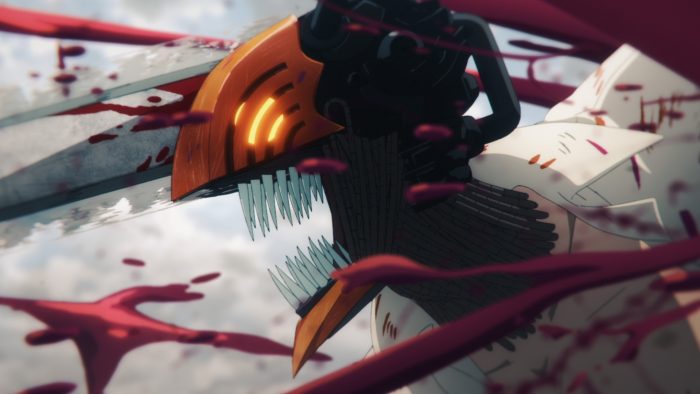
It is finally here - the most anticipated anime adaptation for the last few years has landed this Fall 2022 season in the form of Chainsaw Man. Tatsuki Fujimoto’s manga has been one of the highest-rated since it began serialisation in late 2018, and fans have been dying for the gore-fest to be adapted for the silver screen.
Denji is a poor young man wishing to live a comfortable life with someone he likes, but due to his debts to the Yakuza, Denji spends his time fighting devils with his pet devil Pochita. Tricked into a fight with a devil that has signed a deal with the Yakuza, Denji is murdered. Despite this, Pochita merges with his body to give him incredible abilities as he sprouts chainsaws, bringing him to work with the Public Safety Bureau after he dispatches the Yakuza devil.
All of this is portrayed within the first episode, packed to the tilt of blood, guts, and crunching bones lining up your expectations for this anime from the start. However, this is all entirely foreshadowed in the expertly crafted opening by director Shingo Yamashita through crude pop-culture references to some of Hollywood’s bloodiest flicks and Denji’s transformation into his chainsaw form within them.
A Star-Studded Build-Up
An opening this dense has to be broken down into separate parts, so we will have a look at it in two halves, the first being the build-up that uses movie references to demonstrate our main cast's characteristics to be expected throughout the anime. The first reference is more historical than pop-culture related, pointing to a picture from Dante’s Divine Comedy of a devil who a politician fools as Denji pulls his chainsaw cord, foreshadowing his subservience to Makima. The next ten seconds are packed with Yamashita’s love of cinema as Makima leads our gang of Denji, Power, and Aki across an empty Tokyo street in black ties and suites, mirroring the intro to Reservoir Dogs.
There is a short nod to Texas Chainsaw Massacre straight after, followed by Captain Kishibe mirroring Jules Winnfield’s wallet scene in Pulp Fiction, another nod to Quentin Tarantino’s works. Then, in quick succession, we get a reference to the horror movie Sadako vs Kayako, Galgali posing as Anton Chigurh from No Country for Old Men, another Tarantino flick in Once Upon a Time in Hollywood, and a comedic scene from Attack of the Killer Tomatoes. Finally, the first section is rounded out with three horror references starting with Hideo Nakata’s lesser-known movie Don’t Look Up, the psychological horror Jacob’s Ladder, and the superhero thriller Constantine.
There is much to unpack here, with our character’s power dynamics illustrated in these references. In addition, Denji’s position in these movie scenes helps us understand his role throughout Chainsaw Man. This is best exemplified in his being led around by Makima to show his obedience towards her, his friendship dynamic with Aki demonstrated by the car ride from Once Upon a Time in Hollywood, and the terror in his eyes as Power laughs in ode to Don’t Look Up. Further, into the opening, we get a reference to the opening title of Thor: Love and Thunder while Makima leads Denji on a leash hitting the nail on the head of his subordination to his new master. In complete contrast, we have a reference to The Big Lebowski, where our four main characters are goofing around playing a game of bowling to bring forth the tone that these people look out for each other. Similarly, the scene mimicking Attack of the Killer Tomatoes brings out the comedic value Chainsaw Man has woven into its bloody story.
Gorey Antics
The second half of the opening begins after an interlude with Makima leading Denji through a forest and feeding him a multi-coloured snail before we get the crashing crescendo of the song Kick Back, with the beat ramping up as Denji smashes out of a wall in his chainsaw form. Denji, Power, and Aki are fighting a giant devil before we get our following reference which presents Denji’s chainsaw form in parallel to EVA 1’s escape from the angel Leliel in Neon Genesis Evangelion. The blood and gore illustrate Chainsaw Man’s most iconic theme of violence, part of what has made the manga so popular.
The final two references in the opening note fall to Power as she whacks a golden ball down the street, mirroring the detonated statue scene in Fight Club, foreshadowing her character’s exploration of anarchic and nihilistic motifs much like the film. Finally, Power walks away from an explosion as director Yamashita pays homage to the one-shot manga Goodbye, Eri, from the same creator as Chainsaw Man.
Panning past a few of the show's villains and devils, we reach the end of the opening, where Aki is seen smoking whilst watching Denji and Power doing the Mickey Mouse Hot Dog dance. The ending perfectly encapsulates the two brain cells shared between Denji and Power and Aki’s absolute ambivalence towards the two as we finally fade to black in one of the most densely backed openings anime has ever seen.
Final Thoughts
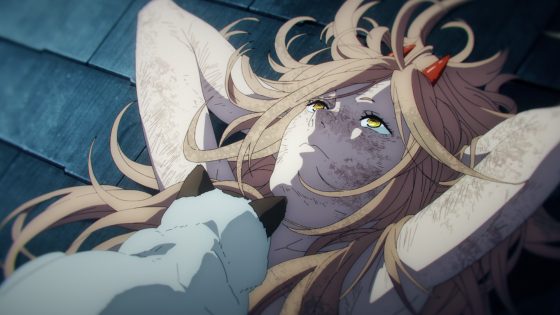
After such a long wait, Chainsaw Man is finally here, and everyone is excited to see if it lives up to the hype. So far, we’re incredibly impressed, and that is in no small part due to the amazingly crafted opening, packed full of movie references and painstakingly lined up with character representation. What do you think of Chainsaw Man’s opening? How have you found the anime so far? Let us know in the comments!
Recommended Post
5 Moments Manga Fans are Dying to See in Chainsaw Man, Season 1!
Recommended Post
6 Manga Like Chainsaw Man
Recommended Post
Chainsaw Man: The Upcoming Action Anime You Don’t Want to Miss
Recommended Post
Chainsaw Man Reveals Epic Promo Video!!
Recommended Post
Chainsaw Man’s Beautifully Light and Dark Start
Recommended Post
Chainsaw Man First Impression - Blood on Blood
Recommended Post
6 Anime Like Chainsaw Man [Recommendations]
Recommended Post
The Reason Chainsaw Man Is a Revolution for Anime!
Recommended Post


